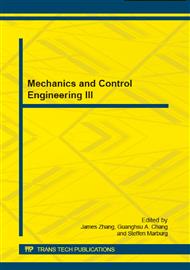p.368
p.373
p.380
p.385
p.390
p.395
p.403
p.408
p.412
A Cost Effective Implementation of a Voice Assisted Home Automation System
Abstract:
Home Automation Systems are mainly targeted towards people with physical difficulties for movement. The proposed Voice Assisted Home Automation System (VAHAS) enables one to control all electrical equipment and peripheral devices by means of just one’s voice. By means of interfacing the devices (which could include lights, televisions, air conditioners and so on) with the Linux powered main device running our software, via RF enabled switches, the system responds to the user’s voice commands and intelligently activates, deactivates and changes the state of the appliances. The paper elucidates the actual implementation of a low cost device and shows the results produced by the system. Scalability and customer accessibility of the system is also considered during design.
Info:
Periodical:
Pages:
390-394
Citation:
Online since:
December 2014
Authors:
Keywords:
Price:
Сopyright:
© 2015 Trans Tech Publications Ltd. All Rights Reserved
Share:
Citation:


